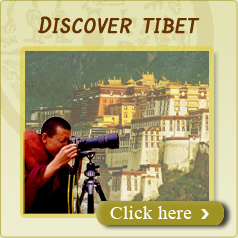Jokhang Monastery

Overview
The Jokhang, also known in Tibetan as the Tsuglhakhang, is the most revered religious structure in Tibet. Located in the center of the ancient city of Lhasa, the Jokhang Monastery was built in the seventh century by Songtsan Gambo, the Tang Princess Wen Cheng and Nepalese Princess Bhrikuti. Its four story main building demonstrates a combination of the Han, Tibetan, Indian and Nepalese architectural styles, as well as a man - made world outlook of Buddhism. With the Hall of Amitayus Sutra as its center, the monastery symbolizes the nuclear to the universe. The Hall of Sakyamuni is the essence of the monastery.
After you've explored the interior of the Jokhang, the best part is arguably spending some time on the roof, with its stunning views. Monks often debate up here in the late afternoon. It's worth finishing off a visit with a walk around the Nangkhor kora (pilgrimage circuit), which encircles the Jokhang's inner sanctum.
Know more
Estimated dates for the Jokhang's founding range from 639 to 647 B.C. Construction was initiated by King Songtsen Gampo to house an image of Mikyoba (Akshobhya) brought to Tibet as part of the dowry of his Nepal wife Princess Bhrikuti. The Ramoche Temple was constructed at the sme time to house another Buddha image, Jowo Sakyamuni (Sakya Thukpa), brought to Tibet by his Han minority wife Princess Wencheng. It is thought after the death of Songtsen Gampo, Jowo Sakyamuni was moved from Ramoche for its protection and hidden in the Jokhang by Princess Wencheng. The image has remained in the Jokhang ever since (Jokhang, or Jowokhang, means 'chapel of the Jowo'), and is the most revered Buddha image in all of Tibet.
It was said that Princess Wencheng chose the site of the Jokhang, and that just to be difficult she chose Lake Wothang. The lake had to be filled in, but it is said that a well in the precincts of the Jokhang still draws its waters from those of the old lake. Over the years, many legends have emerged around the task of filling in Lake Wothang. The most prominent of these is the story of how the lake was filled by a sacred goat (the Tibetan word for goat, ra, is etymologically connected with orginal name for Lhasa-Rasa). A small carving of the goat can be seen in the Chapel of Jampa on the south wall of the Jokhang's ground-floor inner sanctum.
Over centuries, the Jokhang has undergone many renovations, but the basic layout is ancient and differs from that of many other Tibetan religious structures. One crucial difference is the building's east-west orientation; it is said to face towards Nepal to honour Princess Bhrikuti. Alterations were undoubtedly undertaken during the centuries when Lhasa played second fiddle to other center of power, but the most drastic renovations took place during the reign of the fifth Dalai Lama in the 17th century. Lhasa returned to the center stage of Tibetan affairs at this time and the Jokhang Monastery was enlarged accordingly. Only a few carved pillars and entrance arches remain from the original 7th century work of Newari artisans from Nepal's Kathmandu Valley.
Must see
Potala Palace
Over 1,300 years old, Lhasa dates back to th 7th century A.D when the colorful Tibetan figure, Songtsen Gampo, built his palace in Lhasa. In 1642, the 5th Dalai Lama also made Lhasa his capital and rebuilt the architectural wonder, the Potala Palace, on top of the ruins of Songtsen's old abode. Today the Potala Palace contines to dominate the Lhasa skyline and is the most visible of all of the city's sights. It offers one of the best views of Lhasa and the surrounding area, especially in the early...more
Norbu Lingka
It was Built in 1751 as the summer residerce of the Dalai Lama, lies 3km west of the Potala Palace. As harsh winters gave way to spring, a grand procession of Lama and officials accompanied the Dalai Lama from the Potala Palace to his summer home. Norbu Lingka, which means" jeweled garden," is a fitting title for the large compound of buildings and extensive gardens. The palace contains soem fabulous murals fusing Tibetan history and myth. Some of the finest murals are found at the back of the woods in the Golden Lingka and Chensal Potrang...more
Bakhor Street
One of the best places to view modern day Lhasa and its diversity of culture is in the bustling Barkhor Street, a section of the old city. Here, the Barkhor Market has all manner of goods from turquoise jewelry to meditation beads, colorful traditional Tibetan clothes and yak wool sweaters. Here you can watch groups of monks draped in their maroon and saffron robes mingling with Tibetans from remote areas wearing long boots, sporting daggers and large turquoise necklaces...more









